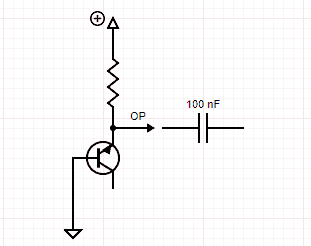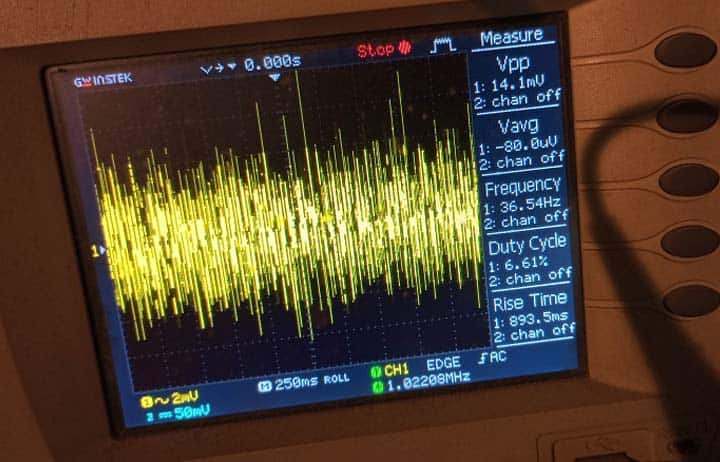I have already outlined many times here how to build very simple noise makers or noise generators. Also, there are many more outside this space, here is a randomly picked project example Arduino White Noise. Now I am going to expand my thoughts on something perhaps a little more interesting!

Let us start again with a pretty simple schematic of a basic white noise generator that was quite popular in the analog music synthesizers of the 1970s.

As you can see, it uses an NPN silicon transistor hooked up backwards, with a current-limiting resistor, across which the noise signal voltage is dropped. Connecting the silicon transistor in this way forces its Base-Emitter junction to act like a Zener diode in the Avalanche mode, which generates wideband noise. Remember that the output (after buffering) will have to go to a power amplifier before you try to drive any loudspeakers.
Simply, white noise comprises all frequencies at all amplitudes. We can generate white noise very simply because it happens naturally in transistors and all we have to do is blow up it.
Here I am playing with a 2N2222A transistor (Nothing special, just what I had handy). The transistor however will need some experiment on your part because every transistor has a different breakdown voltage and renders different noise quality. My selected transistor 2N2222A with a 100KΩ series resistor on 9VDC had noise levels up to 15mV (p-p) at the emitter. Note something between 100KΩ and 1MΩ as the series resistor should give you functional noise from a broad range of common transistors.
Look, you can also get random noise simply by toggling an output pin of Arduino at random intervals. Playing it then through a passive buzzer is all that needed to setup a noise source for acoustic experiments. A very simple and a bit different approach is shown below.

Here, the passive piezo buzzer/piezo disc (PZD) is wired between two I/O pins to render rich output power. You can also try a suited paper trumpet to get more acoustic power out of such a small piezo disc (see a quick example from DIY Audio Community below).

This is the prefatory Arduino Uno Sketch:
void setup() {
pinMode(8,OUTPUT);
pinMode(9,OUTPUT);
}
void loop() {
digitalWrite(8,random(2));
digitalWrite(9,random(2));
}
Alright, a crude Arduino noise generator ready for experiments. Congratulations folks, we did it. But not so impressive, I was wondering if more could be done with this concept!
Back to the avalanche noise sources, further discussion of B-E junctions of NPN transistors as an avalanche noise source is warranted due to its popularity in quick and dirty noise sources.

Note, B-E junctions are engineered with very heavy doping on the E side, and light doping on the B side. This causes a very narrow depletion region on the emitter, and a large depletion region on the B side.
And, emitters on NPN transistor are heavily doped, so the Vbr (voltage breakdown) tends to be in the range of 5-12V (the heavier the emitter doping, the lower the breakdown voltage). The relatively low breakdown voltage Vbr and quick availability of NPN transistors thus makes the age-old scheme still appealing!

Instead of just accepting that it would probably be fine, later I decided to alter the basic “transistor as a noisy zener” setup a little better (see below).

Now it is pretty easy to capacitively couple the low level (and mains hum free) noise to an op-amp circuitry to get a peak-to-peak voltage of desirable level (like a preamplifier circuit to prepare an input signal for the output power amplifier stage). I will not detail how it can be setup, consider it homework.
And so it is okay for a standalone little white noise generator, and if you pick out your parts wise the output should be plenty for audio experiments (the resultant wide spectrum white noise is made up of randomly varying frequencies and amplitudes).
Of course, the cutoff frequency of the high pass filter (100nF+100K) is too much dependant on what is connected at the output so it is best to just pick a comfortable capacitance and resistance to make sure all the white noise at the transistor’s emitter is not any more cut off. Note, breadboards tend to not be very friendly with these kind of experiments.
Here is another simplified scheme for the transistor configuration:

Well, that is all for now. Need a quick and dirty noise source based on regular light emitting diodes? Lucky, I have got something funny for you. Keep watching!



